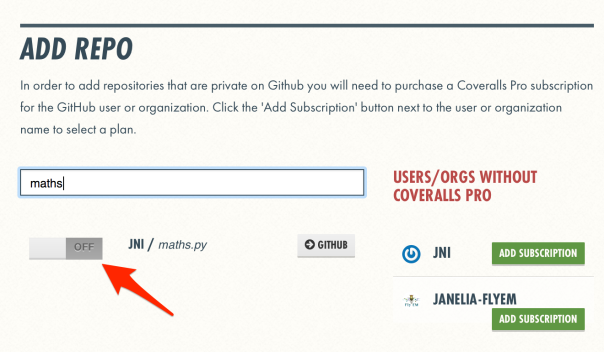I currently have TravisCI building on PRs in a public GitHub repo. The instructions for Coveralls say to put this in a .coveralls.yml file:
service_name: travis-pro
repo_token: <my_token>
That doesn't work for me because the .coveralls.yml file would be public--checked into GitHub. My TravisCI is integrated into my GitHub repo wired to a branch and fires on PR.
So I tried this:
In TravisCI's site I set an environment var:
COVERALLS_REPO_TOKEN to my token's value.
Then modded my .travis.yml to look like this:
language: scala
scala:
- 2.11.7
notifications:
email:
recipients:
- me@my_email.com
jdk:
- oraclejdk8
script: "sbt clean coverage test"
after_success: "sbt coverageReport coveralls"
script:
- sbt clean coverage test coverageReport &&
sbt coverageAggregate
after_success:
- sbt coveralls
Now when I create a PR on the branch this runs ok--no errors and I see output in Travis' console that the coverage test ran and generated files. But when I go to Coveralls I see nothing--"There have been no builds for this repo."
How can I set this up?
EDIT: I also tried creating a .coveralls.yml with just service_name: travis-ci
No dice, sadly.

